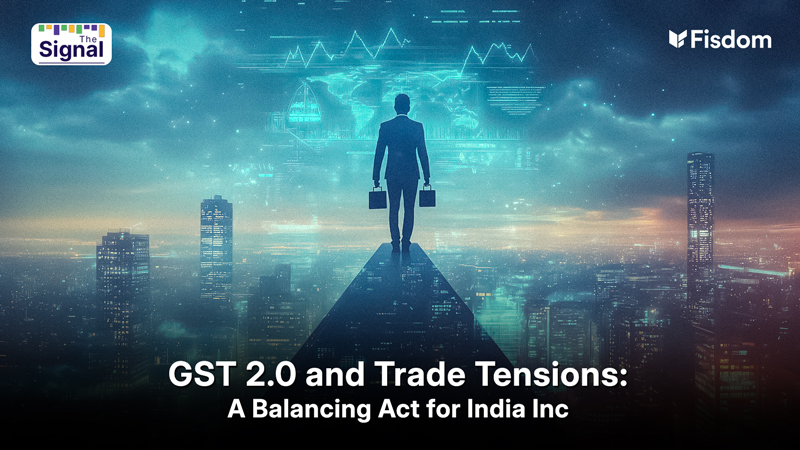
Over the past few years, the Indian power sector has steadily moved from being a policy-dependent, underperforming segment to one that is now receiving greater strategic attention. A convergence of energy consumption shifts, electrification trends, and infrastructure-led transformation is setting the stage for a structurally stronger and more responsive power ecosystem.
A Historical Gap Begins to Narrow
India has long lagged behind other large economies in terms of per capita energy consumption. Historically, its power demand growth trailed GDP expansion, reflecting structural inefficiencies, under-penetration of electrification, and pricing distortions. However, recent trends indicate a shift. Over the last three years, India’s power demand multiplier—essentially the ratio of power consumption growth to GDP growth—has risen above historical averages, suggesting a more direct correlation between economic activity and energy usage.
This mirrors China’s trajectory during the early 2000s, when a decade of industrial and urban expansion led to a compounding of power demand that consistently outpaced GDP growth. While India’s macro structure is different, rising urbanisation, digital infrastructure growth, and evolving industrial models indicate that power demand could maintain a higher growth multiple going forward.
The Engines of Power Demand
Several structural demand drivers are aligning to support a sustained increase in electricity consumption. Rapid urbanisation and growing household incomes are pushing up ownership of energy-intensive appliances like air conditioners and washing machines. At the same time, the growth of data centres—fuelled by cloud adoption, digital services, and AI compute requirements—is creating large and continuous power loads.
The automotive sector is undergoing a significant transformation, particularly in the two-wheeler segment, where electric vehicle adoption is scaling rapidly. Electrification, supported by government incentives and private investments, is expected to further boost base power demand.
In parallel, India’s manufacturing sector is upgrading its operational infrastructure. With shorter product lifecycles and rising global integration, shop floors are becoming more digitised and automated. The adoption of IoT-enabled devices, smart sensors, and real-time data systems is increasing energy intensity per unit of industrial output, which, in turn, adds to the structural demand for reliable electricity.
Supply-Side Response: Scaling Up Capacity and Transitioning to Renewables
To match the changing demand landscape, policy frameworks and capacity planning are undergoing transformation. India’s National Electricity Plan outlines an aggressive buildout in generation capacity. From around 400 GW in 2022, the target is to exceed 600 GW by 2027 and reach 900 GW by 2032. A defining feature of this expansion is the growing share of renewables, with solar and wind projected to account for more than half of installed capacity by the end of the decade.
This transition, however, brings new challenges. While renewables help reduce dependence on imported fuels and cut emissions, they come with intermittency and lower project-level returns. Additionally, power transmission infrastructure must keep pace with decentralized energy sources. Delays in land acquisition, cost overruns, and low utilisation factors in solar/wind projects can strain returns.
Enabling Infrastructure and Strategic Interventions
India’s energy roadmap to 2047 includes a host of complementary initiatives. Strategic petroleum reserves are being built for emergency response. Grid modernization efforts and the deployment of smart meters and energy-efficient appliances aim to improve end-user efficiency and reduce waste.
Energy storage—both in the form of battery-based systems and pumped hydro—is emerging as a critical solution to smoothen renewable supply volatility. Meanwhile, infrastructure around LNG terminals, natural gas pipelines, and nuclear energy capacity is being scaled up to provide baseload stability.
Another notable area of intervention is the rationalization of electricity pricing. State-level subsidies and cross-subsidisation have distorted energy pricing and contributed to inefficiencies. Gradual implementation of direct benefit transfer models for electricity consumers is being explored to enhance transparency, reduce subsidy burdens, and drive behavioural efficiency.
Investment Case: Still Evolving, But No Longer Ignored
For decades, public sector power utilities struggled with execution delays, poor return ratios, and pricing inflexibility. Investors were often sceptical of the sector’s ability to generate sustainable wealth. However, recent trends indicate a mindset shift. Several listed companies in the sector—including large generation firms, power exchanges, and transmission players—have demonstrated improved financial discipline, operational performance, and even healthy dividend records.
As the electrification story deepens—both across households and industries—power companies are repositioning themselves to align with the new energy economy. Analogies are being drawn to the defence sector, where market scepticism once ruled, but selective companies delivered outsized returns post structural shifts.
India’s journey toward energy security and clean energy access is not just a policy ambition—it’s a necessary condition for economic transformation. The expanding scope of electricity in enabling rural development, digital inclusion, and industrial competitiveness places the power sector at the centre of the country’s next growth cycle.
Whether the sector replicates the kind of wealth creation seen in defence stocks is yet to be seen. But with greater private participation, sharper policy alignment, and visible demand growth, the power sector is no longer just a utility—it may be a structural opportunity.
Market this week
| 16th June 2025 (Open) | 20th June 2025 (Close) | %Change | |
| Nifty 50 | ₹ 24,732 | ₹ 25,112 | 1.5% |
| Sensex | ₹ 81,034 | ₹ 82,408 | 1.7% |
Source: BSE and NSE
- Indian benchmark indices recovered previous week’s losses, ending strong on Friday as easing geopolitical tensions supported investor sentiment.
- Markets were buoyed after US President Trump hinted that the US may delay any direct involvement in the Israel-Iran conflict for the next two weeks.
- On the sectoral front, Nifty Private Bank rose 1.6%, Nifty Auto gained 1.5%, and Nifty IT advanced 1.3%.
- On the flip side, Nifty Media declined 3%, Nifty Pharma fell 1.7%, and both Nifty Metal and PSU Bank indices dropped 1.3% each.
- Foreign Institutional Investors (FIIs) turned net buyers after four weeks of selling, purchasing equities worth ₹8,709.60 crore.
- Domestic Institutional Investors (DIIs) continued their strong buying streak for the ninth straight week, with inflows of ₹12,635.58 crore.
Weekly Leaderboard
| NSE Top Gainers | NSE Top Losers | ||||
| Stock | Change (%) | Stock | Change (%) | ||
| M&M | ▲ | 5.9% | TATA Motors | ▼ | -5.0% |
| Trent Ltd | ▲ | 5.5% | Adani Ports & SEZ | ▼ | -4.0% |
| Bharti Airtel | ▲ | 5.2% | Bajaj Finance | ▼ | -3.0% |
| Eicher Motors | ▲ | 3.9% | Dr Reddy’s | ▼ | -2.7% |
| Bharat Electronics | ▲ | 3.6% | Adani Enterprises | ▼ | -2.4% |
Source: BSE
Stocks that made the news this week:
Auto Sector Faces Supply Shock from Rare Earth Export Slump
Shares of Bajaj Auto and Hero MotoCorp declined last week as concerns mounted over disruptions in the supply of rare earth magnets—a key component in electric drivetrains. China’s rare earth magnet exports fell sharply in May to a five-year low of 1,238 metric tons, marking a 74% year-on-year decline and 53% drop month-on-month. The steep fall, driven by tighter controls and increased customs scrutiny, has raised fears of production hurdles for automakers globally, especially those dependent on imported critical components.
Defence Stocks Rally Amid Rising Geopolitical Tensions
Defence companies saw strong buying interest on Friday, supported by renewed geopolitical risks in the Middle East. The Nifty Defence index climbed 2%, with 16 of its 18 constituents ending in the green. BEML led the rally with a 9% gain, followed by Garden Reach Shipbuilders, Cochin Shipyard, and Bharat Electronics, which gained up to 5%. Hindustan Aeronautics Ltd also rose over 1% after being awarded the transfer of technology for ISRO’s Small Satellite Launch Vehicle (SSLV), reinforcing its strategic positioning in India’s growing space and defence ecosystem.
Dilip Buildcon Wins ₹1,341 Cr Order, Ends Flat Despite Intraday Spike
Infrastructure company Dilip Buildcon surged nearly 4% intraday after announcing a major ₹1,341 crore project win from Konkan Railway. The contract involves constructing a four-lane twin-tube unidirectional tunnel to enhance road connectivity between Anakkampoyil, Kalladi, and Meppadi in Kerala. Despite the positive news, the stock erased its gains by the end of the session, closing marginally lower at ₹485.50 after hitting an intraday high of ₹506.85.














